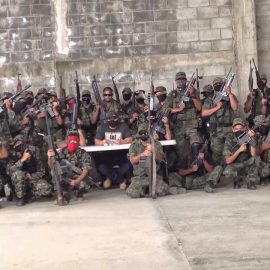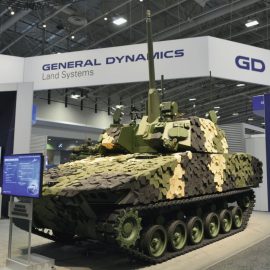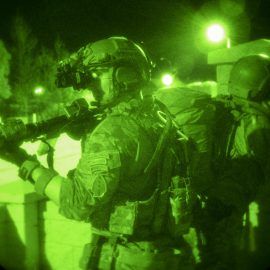He went in fast, going over the corpse in the doorway and stepping right. There wasn’t a good place to move in the entryway; it formed a short hallway that opened up on the kitchen in the open central room, with a double door immediately to the left, that was currently closed. The closed door wasn’t the immediate threat, though. The two men and a woman in the kitchen, the woman coming out of the bedroom beyond with what looked like a semi-auto shotgun, were. He stroked the trigger as he moved, driving forward and slowing just enough that he wouldn’t quite clear the short wall to his right before he dealt with the three threats in front of him. His first shot took the tall, bald, heavily muscled man, covered in tattoos, high in the chest. Red blossomed on the man’s white wife-beater and sprayed from his back, spattering the woman with the bobbed hair and red shirt in the face. She blinked as the man crashed onto his back in front of her, then Huntsman put a bullet through her skull, the thunderclap of the report physically painful in the enclosed space. Hank could already feel his ears
The Irregular Side of Future War

So far, the Maelstrom Rising series has mostly focused on the fact that conventional combat in future war is anything but dead. But there’s an irregular side to it, too, and the future is going to feature as much of the irregular, asymmetric side as the conventional, combined-arms side. There’s an article over on Borderland Beat about just that side of warfare, a side that is becoming increasingly prevalent in the modern world. Future conflicts will mostly be waged by drug cartels, mafia groups, gangs, and terrorists. It is time to rethink our rules of engagement. Wars are on the rebound. There are twice as many civil conflicts today, for example, as there were in 2001. And the number of nonstate armed groups participating in the bloodshed is multiplying. According to the International Committee of the Red Cross (ICRC), roughly half of today’s wars involve between three and nine opposing groups. Just over 20 percent involve more than 10 competing blocs. In a handful, including ongoing conflicts in Libya and Syria, hundreds of armed groups vie for control.
Holding Action Prologue

Three Weeks Later, And Still Few Answers It has been three weeks since the beginning of the catastrophic blackout that has cut off electrical power to the Pacific Coast, the Southwest, much of the Southeast, and the Eastern Seaboard. Efforts to restore the grid in effected areas have largely met with failure, either due to technical problems or attacks by gangs. This seems to have bolstered theories that the blackout was caused by a terrorist attack. Authorities that this reporter was able to reach have not endorsed this view, however, insisting that there is no solid evidence of such an attack. Nor have the rash of infrastructure attacks been linked by any such authorities. The official, who preferred to remain anonymous, dismissed such links as “conspiracy theories.”
Maelstrom Rising Tech – The M5 Powell Infantry Fighting Vehicle

As I’ve written elsewhere, setting a story in the near future sometimes requires some attempt at clairvoyance. Some of the weapons systems that will be used in a future war are still in development. Some might not exist yet, but getting too crazy sci-fi could derail things, so I’ve got to strike a balance. One of those systems that I introduce in Escalation is the M5 Powell Infantry Fighting Vehicle. This is set up as the replacement for the M2 Bradley IFV, which has been in service since 1981. Now, there is an M2 replacement in the works. The Army calls it the Next Generation Combat Vehicle program, and the Request For Proposals went out in March of this year. Right at the moment, there are three major contenders, the BAE Systems CV90 Mk IV, the Rheinmetall and Raytheon Lynx IFV, and the General Dynamics Griffin III.
